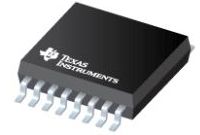By Texas Instruments 65

Texas Instruments' DSLVDS1047 device is a quad CMOS flow-through differential line driver designed for applications requiring ultra-low power dissipation and high data rates. The device is designed to support data rates in excess of 400 Mbps (200 MHz) using LVDS technology.
The DSLVDS1047 accepts low-voltage TTL/CMOS input levels and translates them to low-voltage (350 mV) differential output signals. The driver supports a TRI-STATE function that may be used to disable the output stage, disabling the load current, resulting in the device dropping to an ultra-low idle power state of 13 mW typical. The DSLVDS1047 has a flow-through pinout for easy PCB layout.
The EN and EN* inputs are ANDed together and control the TRI-STATE outputs. The enables are common to all four drivers. The and companion line receiver (DSLVDS1048) provides an alternative to high-power pseudo-ECL devices for high-speed point-to-point interface applications.